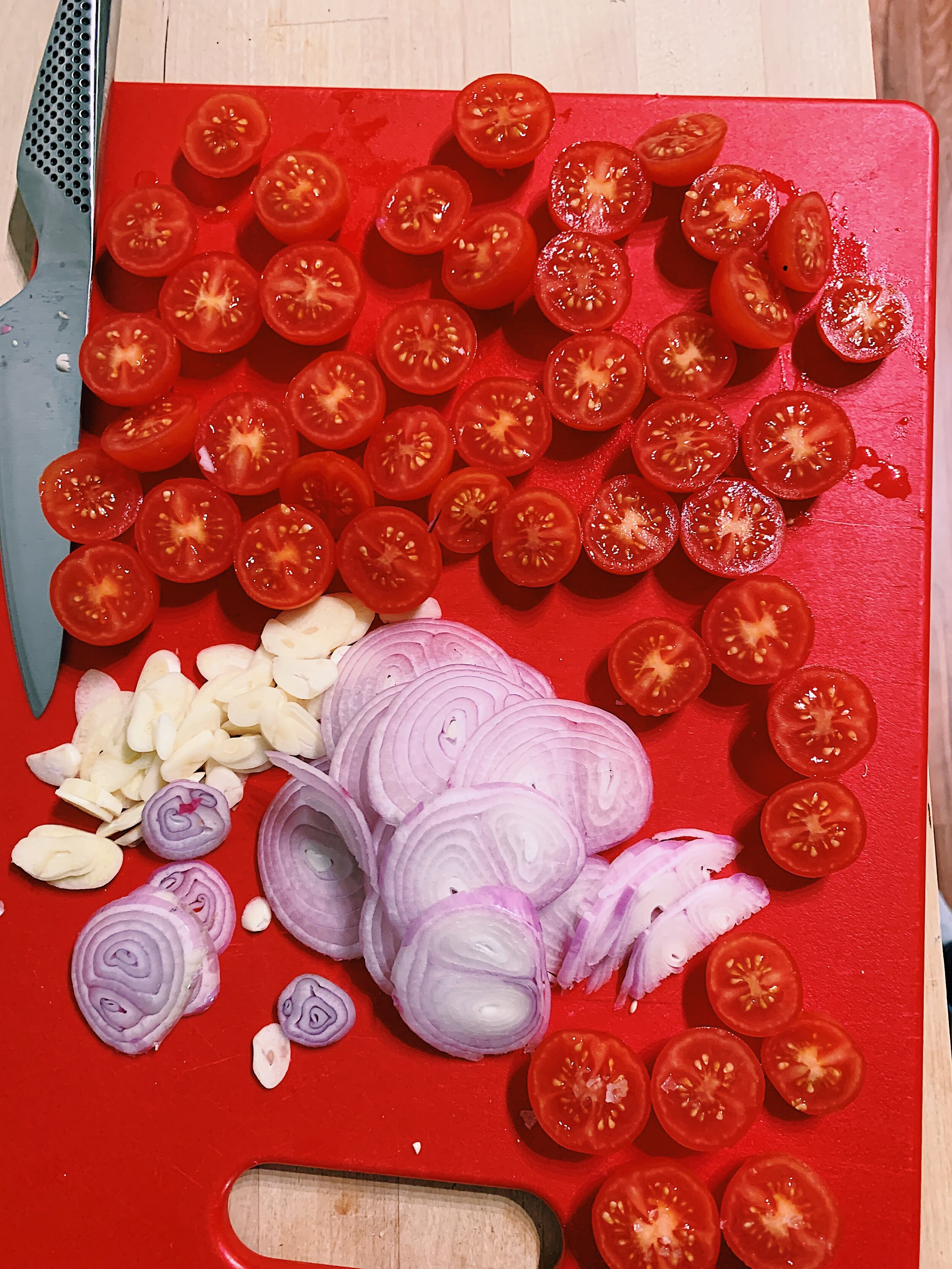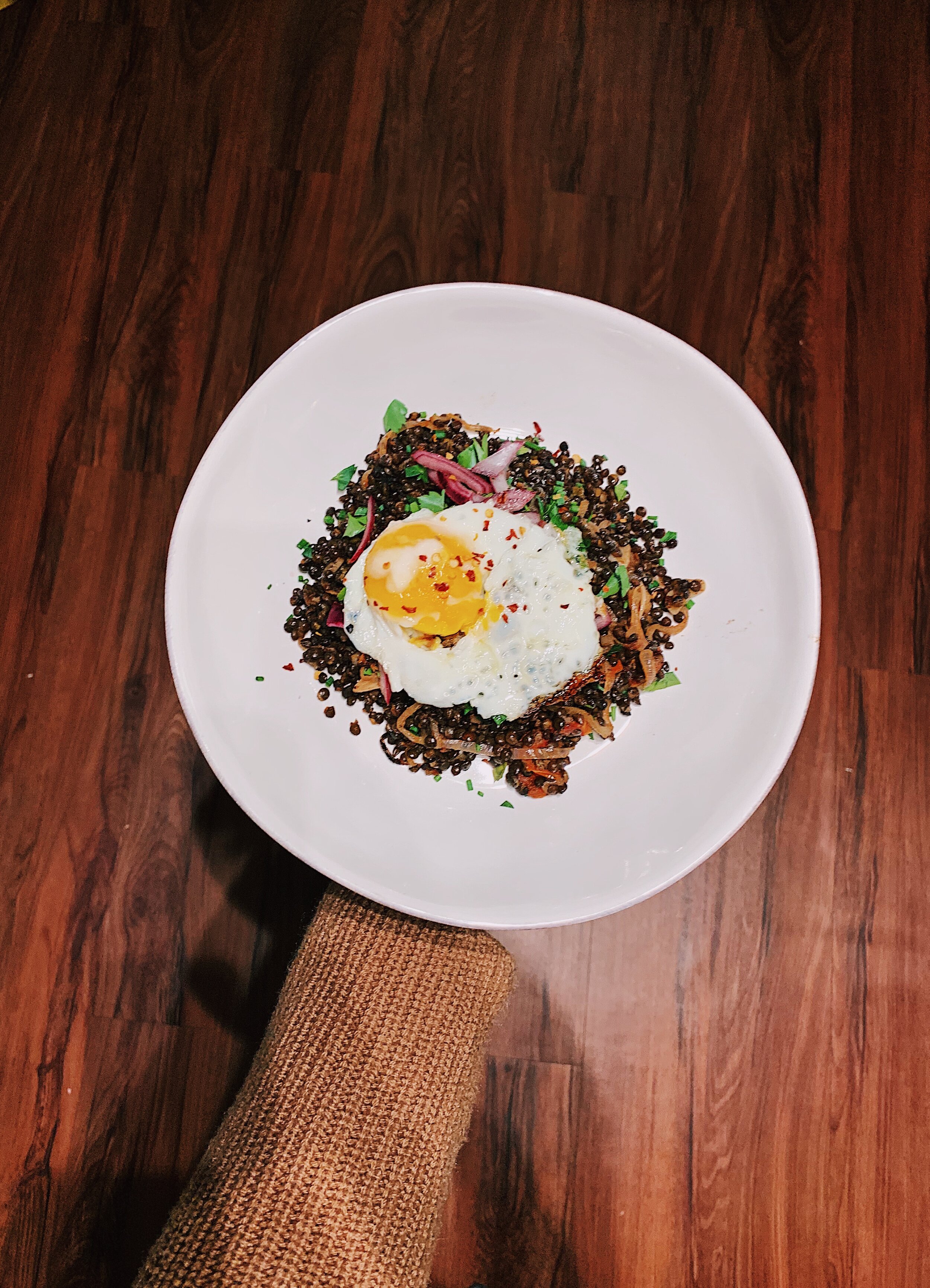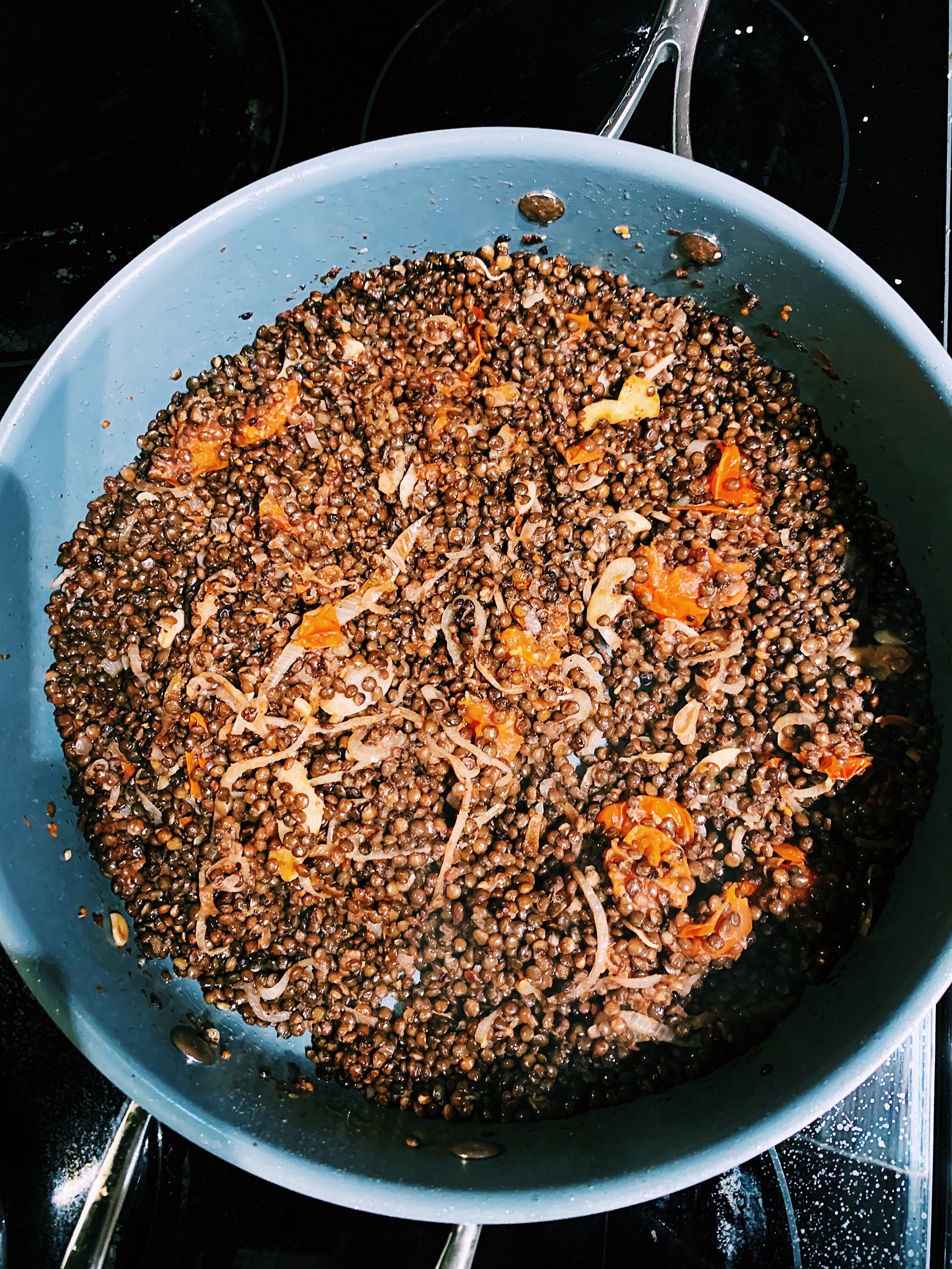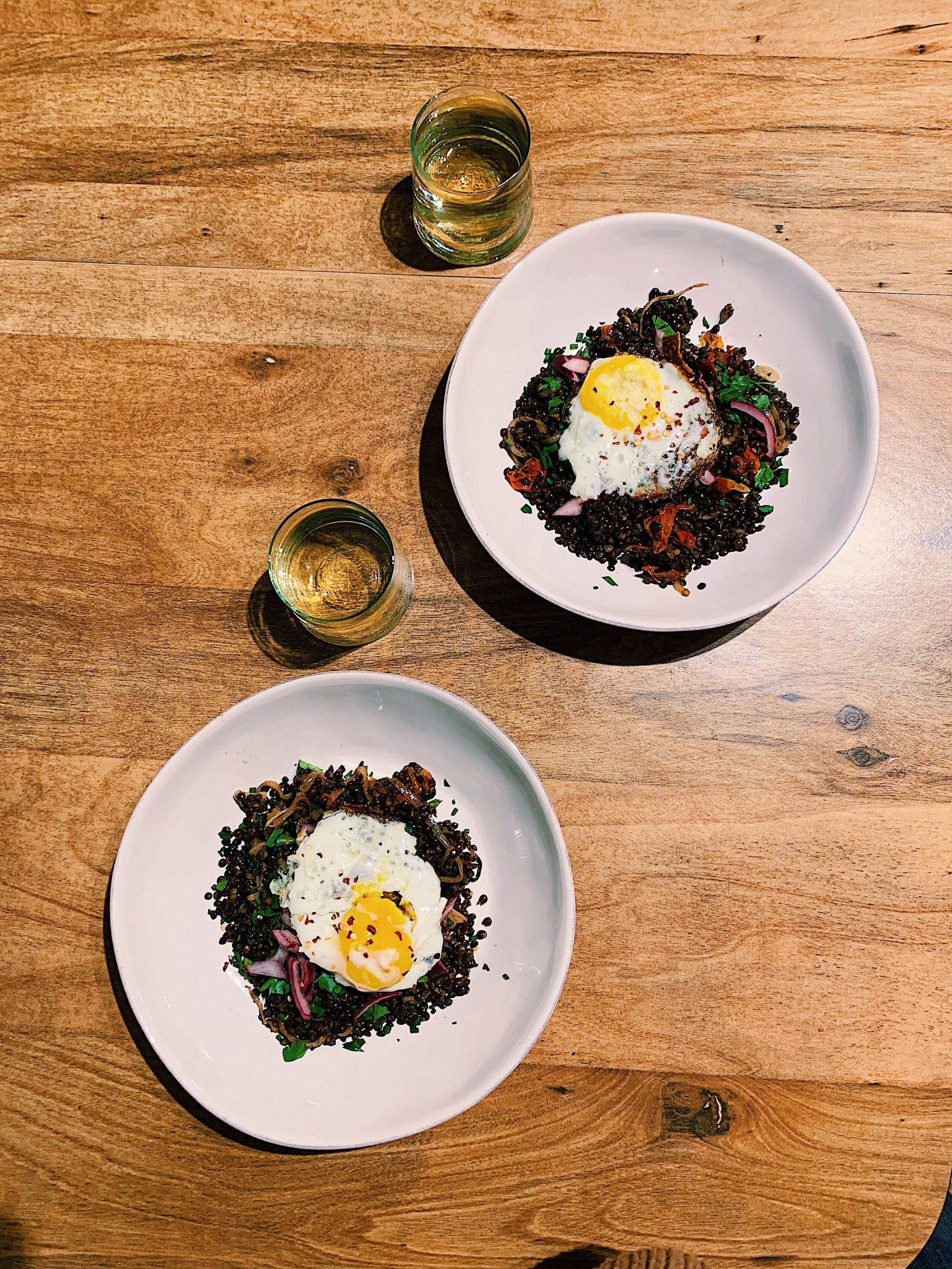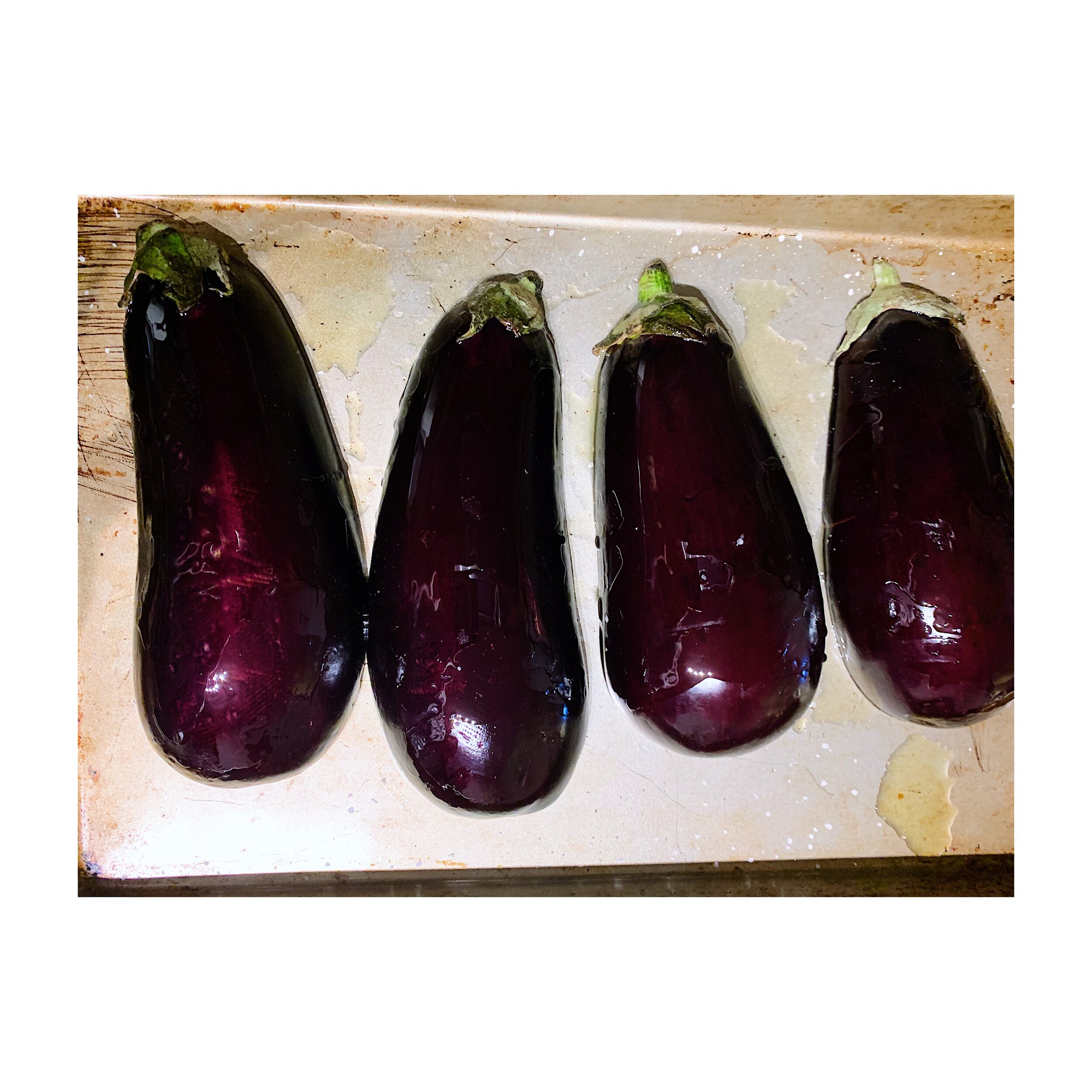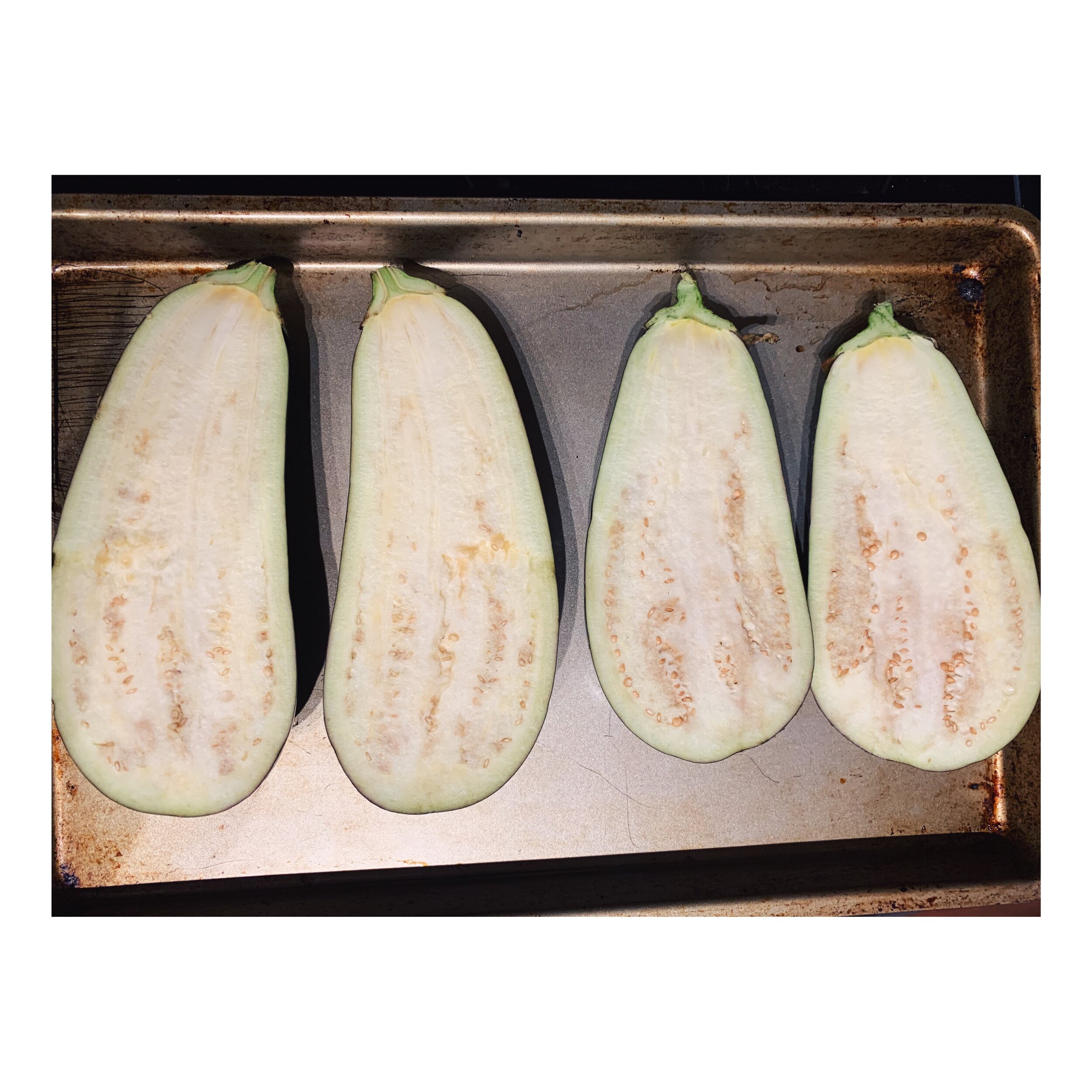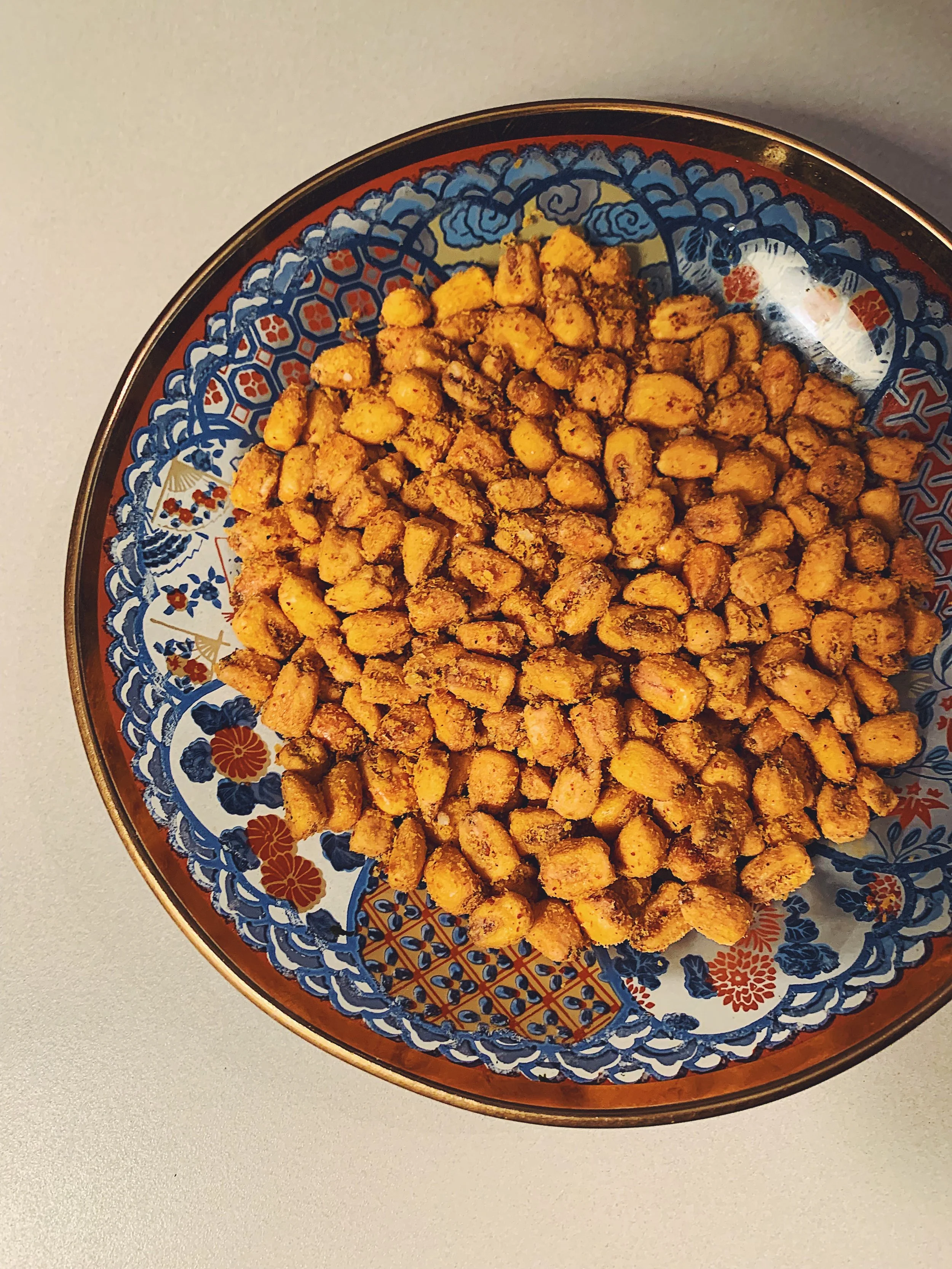Harissa? I hardly know her!
But really, this was our first time meeting. For all the praise I’d heard about this tomato-chile paste over the years, it took me until now to summon the courage to look her in the eye. To be honest, I was afraid of her being too spicy. Packing heat is harissa’s reputation after all. But when I saw this recipe, I thought that maybe using harissa to add the heat to an otherwise middle-of-the-road vegetable seemed like the right kind of first date.
(I realize that I frequently talk about food/ingredients as if they’re people. Should I be concerned? Is this a normal progression?)
To begin, harissa paste and several garlic cloves are sauteed at the bottom of a large pot, until the harissa begins to caramelize. Then a large tomato, quartered, is added and cooked until it begins to break down. I found that this step took longer than outlined in the instructions, which I’m guessing is due to the size of the tomato chunks. Next time I’ll cut the tomato into eighths to speed up this process.
A bit of white wine comes in next to deglaze the bottom of the pot. I chose a cheap Sauvignon Blanc (Trader Joe’s Coastal brand), and served it with dinner as well. As far as cheap whites go, this one is quite nice! Finally, the green beans are tossed and coated with the spicy tomato mixture and cooked over medium-low with the lid on to steam them. The goal here is to cook the beans until they are “delightfully softened but not yet mushy.”
In true Alison fashion, the beans are tossed with a cup of fresh herbs, a half cup of chopped chives, and lemon zest.
After cooking it down, the harissa paste added a nice amount of heat without overpowering the dish. It made me wish that we’d met sooner. I think this dish is a really nice way to eat green beans. I’m used to roasting them with olive oil and lemon juice, so this was a welcomed change.
32 recipes cooked, 193 to go.
These green beans go really well with Alison’s Slow Roasted Oregano Chicken with Buttered Tomatoes. In fact, almost anything goes well with that chicken.








